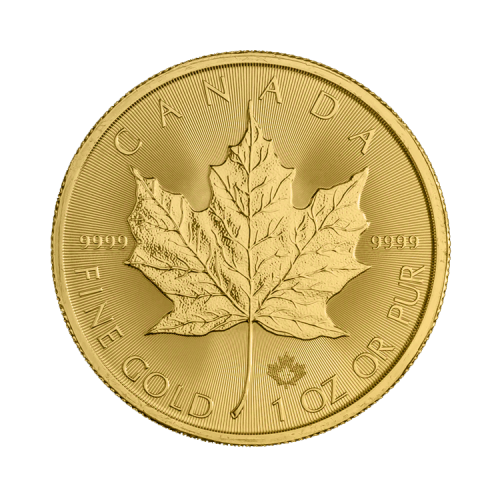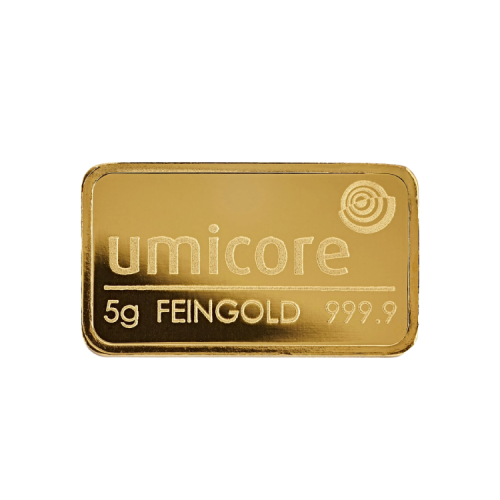What is Fiat Money? Understanding how fiat currency works
Update: 27 November 2025 Reading time: 7 min

Fiat money is the type of money we all use today, such as euros, dollars, and pounds. Unlike gold or silver, fiat money has no intrinsic value. Its worth comes from the trust in the economy and the central bank that issues it.
In this article, we explain what fiat money means, how it originated, how it functions, and why understanding its risks and limitations is crucial. We’ll also look at alternatives such as investing in gold, silver, or cryptocurrencies.
Key takeaways about fiat money:
- Fiat money has no intrinsic value; it derives its worth from public confidence in governments and central banks.
- Since the end of the gold standard in 1971, all currencies have been based on a fiduciary system without physical backing.
- Excessive money creation leads to inflation and loss of purchasing power, and in in extreme cases, hyperinflation.
- Gold and silver remain stable stores of value, independent of monetary policy or economic fluctuations.
- Understanding the monetary system and diversifying investments helps protect wealth, even when fiat currencies lose value.
What does fiat money mean?
The term fiat comes from Latin, meaning “let it be done” or “so it shall be”. This reflects the nature of fiat money: its value does not stem from physical assets like gold or silver, but from a government decree that recognises it as legal tender.
In essence, fiat money holds value because society agrees it does and because people trust that others will accept it for payments, savings, or debt settlement.
Fiat money is a type of fiduciary money, derived from the Latin fiducia, meaning “trust”. It represents value based on confidence in the issuer, typically a central bank. As long as that trust remains, the system functions smoothly.
The rise of fiat money is closely linked to the abolition of the gold standard in the 20th century. Until then, people could exchange banknotes for a fixed amount of gold or silver.
- Fiat money has no intrinsic value, unlike gold or silver.
- Its worth depends entirely on trust in the issuing authority.
How does fiat money work? The fiduciary monetary system explained
Fiat money forms the foundation of the modern financial system. Its value is not derived from physical backing but from public trust and government regulation.
It operates through legal recognition and societal acceptance. Everyone must accept it as a means of payment, and everyone assumes it will retain its purchasing power tomorrow.
Unlike under the gold standard, governments can now create money without tangible reserves. While this offers flexibility for economic policy, it also makes the system more vulnerable to inflation and currency depreciation.
Main characteristics of fiat money
- Legal tender: The government mandates that fiat money be accepted for payments and debts.
- Money creation by central banks: Central banks control the money supply depending on economic conditions.
- No intrinsic value: Its value relies entirely on confidence, not on a commodity.
- Prone to inflation: When more money circulates than goods and services available, purchasing power declines.
- Fiduciary system: The stability of fiat money depends on trust in the government, economy, and financial institutions.
From gold standard to fiat money: A short history
Today’s monetary system evolved over centuries. Where once currencies were directly tied to gold or silver, they now depend purely on confidence. This shift from the gold standard to fiat currency marked a fundamental change in how value is defined and managed.
Key historical milestones:
- 19th century: The rise of the gold standard: Western nations linked their currencies to gold. Each note represented a fixed quantity of gold held in reserve, ensuring stability and predictable exchange rates.
- World War I (1914): To finance wartime spending, governments printed more money than their gold reserves allowed, suspending convertibility — the first step toward a fiduciary system.
- The Great Depression (1925–1931): Attempts to restore the gold standard failed, triggering deflation and economic collapse. Britain abandoned it permanently in 1931.
- The Bretton Woods System (1944): After WWII, major currencies were pegged to the US dollar, which remained convertible to gold at $35 per ounce.
- The Nixon Shock (1971): US President Richard Nixon ended the dollar’s convertibility to gold, marking the official start of the modern fiat money era.
Interested? Read more about the origins of banking and fiduciary money.
Risks and limitations of fiat money
While fiat currency is indispensable in modern economies, it has clear drawbacks. Its value depends entirely on trust in governments and financial institutions, making it vulnerable to mismanagement, inflation, and loss of purchasing power.
A major risk is excessive money creation. Governments and central banks can issue more money to stimulate growth. But in the long run, this causes devaluation: savers lose purchasing power while debts become cheaper to repay.
Fiat money is also sensitive to monetary and political decisions. Poor policy choices, such as prolonged low interest rates or overuse of stimulus measures, can lead to structural inflation.
Furthermore, digitalisation introduces new vulnerabilities: reliance on banking systems, electronic infrastructure, and central control can make the system fragile during crises or technical failures.
Main risks of fiat money
- Inflation and loss of purchasing power
- Dependence on government policy
- Lack of intrinsic value
- Confidence risk and capital flight
- Financial instability
- Digital vulnerability

The euro and dollar are examples of fiat money.
Fiduciary money and the risk of hyperinflation
Hyperinflation occurs when prices rise uncontrollably, and money rapidly loses value. This typically happens when governments print excessive amounts to finance deficits or debt.
As trust collapses, people rush to spend money before it devalues further. This will accelerate inflation even more.
Historical examples
- Germany (1920s): Prices doubled daily, and a loaf of bread cost millions of marks.
- Venezuela and Zimbabwe (recent decades): Inflation reached millions of percent annually.
When hyperinflation strikes, people turn to stable stores of value such as gold, silver, or foreign currencies.
Alternatives to fiat money: Gold, silver and cryptocurrencies
Although fiat money dominates the global economy, many investors look for store-of-value assets to safeguard their wealth. The most common alternatives are physical gold, silver, and digital assets such as Bitcoin.
Gold and silver: tangible value
Gold and silver have served as money and a store of wealth for thousands of years. Their intrinsic value lies in their scarcity, physical properties, and universal acceptance. Unlike fiat money, precious metals cannot be printed and thus preserve purchasing power during inflation or crises.
At The Silver Mountain, investors can buy physical gold and silver with guaranteed authenticity and insured storage through Edelmetaal Beheer Nederland.
Cryptocurrency as a digital alternative
Digital currencies such as Bitcoin and Ethereum offer decentralised alternatives to fiat money. Their supply is limited, Bitcoin, for instance, is capped at 21 million coins, creating a form of digital scarcity comparable to gold.
While cryptocurrencies remain volatile and driven by market sentiment, they serve as protection against monetary inflation and government intervention.
| Fiat money | Precious metals | Crypto | |
|---|---|---|---|
| Value basis | Trust | Intrinsic value | Digital scarcity |
| Supply | Unlimited (monetary policy) | Limited and physical | Hard-coded in software (blockchain) |
| Inflation sensitivity | High | Low | Low |
| Volatility | Relatively stable | Low in the long term | High in the short term |
| Use as a means of payment | Accepted everywhere | Limited | Mainly online |
| Use as an investment | No (due to inflation) | Yes, a store-of-value investment | Speculative with high growth potential |
Conclusion: why understanding fiat money matters
Fiat money underpins today’s global economy, yet its value relies entirely on trust and monetary policy. This makes the fiduciary system flexible but inherently fragile. History, from the gold standard to episodes of hyperinflation, shows that money without physical backing can lose its purchasing power over time.
To protect your wealth, consider diversifying into tangible assets like gold and silver, which maintain intrinsic value regardless of government or central bank policy.
Disclaimer
The Silver Mountain does not provide investment advice. This article is for educational purposes only. Past performance is not indicative of future results.
These are the most asked questions about fiat money.
Frequently Asked Questions about fiat money meaning
1. What is fiat money and how does it work?
Fiat money is currency without intrinsic value that is accepted because the government declares it legal tender. Its worth is based entirely on trust in the issuing authority, usually a central bank, and economic stability.
2. Why does fiat money have value if it isn’t backed by gold?
Fiat money retains value because people believe others will accept it for goods and services. As long as confidence in the system remains, it functions as both a medium of exchange and a store of value.
3. What are the main risks of fiat money?
The greatest risk is inflation caused by overproduction of money. When governments print too much, purchasing power declines, in severe cases leading to hyperinflation and loss of trust in the currency.
4. What’s the difference between fiat money and gold-backed money?
Gold-backed money could be exchanged for a fixed quantity of gold. Fiat money cannot; its value depends solely on trust and government regulation, not on a physical commodity.
5. How can I protect my wealth from fiat money devaluation?
By investing in tangible assets such as physical gold or silver. These metals maintain purchasing power over time and provide a hedge against inflation and economic uncertainty.
6. Are cryptocurrencies an alternative to fiat currency?
Yes, cryptocurrencies like Bitcoin operate independently from governments and banks. Their supply is limited, making them less inflation-prone, though they are far more volatile than gold.
7. Why do central banks print more money?
Central banks create money to stimulate the economy during recessions or crises. While this can boost growth short-term, excessive printing often leads to inflation and erosion of purchasing power.
8. Can fiat money lose its value completely?
Yes. When trust in a currency collapses, due to political instability, excessive debt, or uncontrolled money creation, hyperinflation can occur. As a result the currency may cease to function as a reliable means of exchange.
 Over Daan Wesdorp
Over Daan Wesdorp
Manager Inkoop Edelmetaal | Stocks, cryptocurrencies and precious metals














